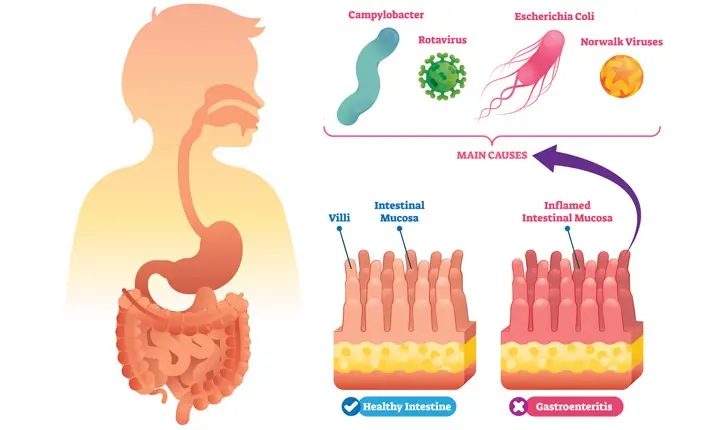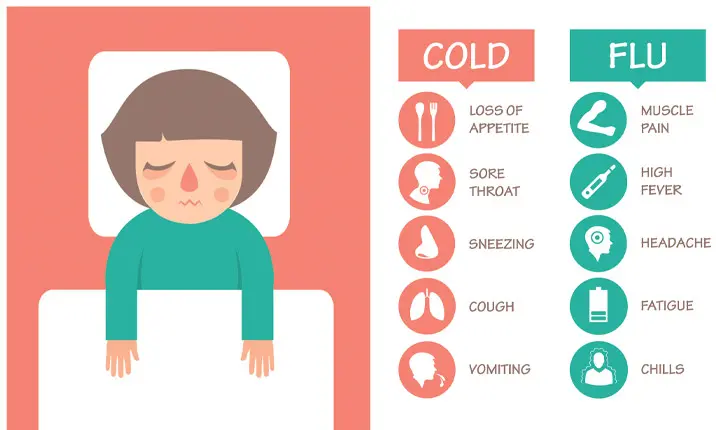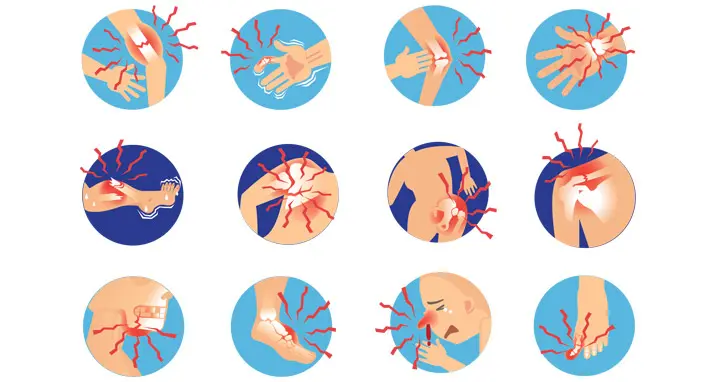Holidays are great, but only if no one falls sick or has to struggle to enjoy a party! In case you are starting to fret, here are some information and useful tips from specialists on common illnesses contracted during the holiday season.
Stomach flu (Gastroenteritis)
For the foodies out there, it is no secret that you live to eat, and the holidays are perfect for eating out and pigging out. For the roadtrippers, what can be a greater achievement than having tried (and of course, instagrammed) as many local street eats as possible? Before you foodies go full blast on eating, do be aware of stomach flu, a common contagious condition relating to food consumption.
What is stomach flu (gastroenteritis)?
Inflammation of the stomach and intestines, usually due to bacterial or viral infection
What are the causes of stomach flu (gastroenteritis)?
There are several causes for stomach flu, some more common than others. These include:
- Viruses. Rotavirus is the world's most common cause of diarrhoea in infants and young children. Another type of virus called norovirus causes serious gastroenteritis.
- Bacteria. Less commonly, bacteria such as E. coli, salmonella and shigella also trigger stomach flu. These are commonly found in contaminated food and drinks.
- Parasites. Certain organisms such as giardia and cryptosporidium can be picked up in contaminated swimming pools or by drinking contaminated water.
- Toxins that might be found in certain seafood.
Gastroenteritis can spread from one person to another through:
- Contaminated food or water
- Contact with an infected individual
- Unwashed hands after diaper-changing or bathroom visit
What are the symptoms of stomach flu (gastroenteritis)?
- Diarrhoea, which is often very watery and can be bloody if the source of gastroenteritis is bacterial.
- Nausea, vomiting or both
- Stomach pain, cramping, and loss of appetite due to persistent diarrhoea and vomiting
- Dehydration, which may manifest as dry skin, a dry mouth, lightheadedness and feeling very thirsty
- Electrolyte imbalance in young children due to diarrhoea and vomiting that can lead to death if untreated
- Fever, headache, body aches, chills and fatigue in gastroenteritis that is caused by a virus. These symptoms overlap with illness caused by the influenza virus (the flu), leading to much of the confusion between the two conditions.
How to treat stomach flu (gastroenteritis)?
Dr Kelvin Thia, gastroenterologist at Mount Elizabeth Hospital advises that a patient should hydrate with water and isotonic drinks, avoid oily or spicy food and milk until symptoms stop surfacing.
"Seek medical help immediately if there is high fever, severe abdominal pain or severe vomiting", says Dr Thia. "Also, those with existing medical conditions tolerate dehydration and infections less well. They should contact their regular doctor."
How to prevent stomach flu (gastroenteritis) when travelling?
To avoid the situation of a stomach flu ruining your travels, take these precautions:
- Wash your hands regularly.
- Drink bottled water and beverages. Make sure they are sealed before you open them.
- Consume local water only after boiling it for 3 minutes.
- Brush your teeth with bottled water and keep your mouth closed when showering.
- Avoid raw fruits and vegetables unless they have a skin that you can peel.
- Stick to well-cooked food while eating out and don't consume any ice or undercooked meat or fish.
- Avoid street vendors where the risk of food contamination is higher compared with restaurants.
Common flu and influenza
The holiday season is always a great chance to connect with friends and families. However, being in close proximity with others, and sharing food and drinks, puts you at risk of catching the cold from someone who already has it. If you think that the common cold is so common that it is harmless, you are mistaken! Common cold if left untreated may develop to become bronchitis or pneumonia, which has can prolong your down period.
What is the common flu and influenza?
Common cold and influenza are an upper respiratory (nose, mouth, throat, lungs) system infection caused by viruses. It is difficult to distinguish between the 2, but common cold tends to cause more cough, sore throat, runny nose and milder fever. On the other hand, influenza causes less coughs, sore throat and runny nose, but more fever, headaches and muscle aches.
What are the causes of common flu and influenza?
Direct contact with infected individual or inhaling fluid droplets that contain the flu virus.
What are the symptoms of common flu and influenza?
Symptoms of a common flu and influenza include:
- Runny nose
- Sneezing
- Cough
- Sore throat
- Headache
- Nasal congestion
- Fever
- Muscle aches
How to treat common flu and influenza?
Dr Leong Hoe Nam, infectious disease specialist at Mount Elizabeth Novena Hospital, advises, "Adequate fluids and rest are important for fast recovery. Over-the-counter cough and runny nose remedies can help relieve symptoms.
"Influenza is more dangerous and can lead to pneumonia and hospitalisation. Hence, seek medical help if there is persistent fever, nausea, vomiting, diarrhoea or aches."
How to prevent the common flu and influenza when travelling?
Always allocate a serving spoon for shared dishes, wear masks and wash hands frequently.
Bone fracture
For the sporty ones, some may have taken this opportunity to go skiing in the colder parts of the world or go for a trek to reconnect with nature. Unfortunately, this increases the occurrence of accidents and falls during the season. What a bummer to be stuck with a bone fracture during the holidays!
What is a bone fracture?
Broken bone. The bone may snap into 2 or more pieces. In an open fracture, the bone protrudes through the skin and may recede back into the wound and become non-visible. In a closed fracture, there is no open wound in the skin.
What are the causes of bone fractures?
Some of the causes of bone fractures that are likely to happen during a holiday include:
- Falls when indulging in sporting activities such as hiking, skiing, jumping on trampolines and playing games like football and frisbee.
- Sudden increase in activity. Walking infrequently on a day-to-day basis but ending up walking excessively or on uneven surfaces while on vacation may cause stress fractures in your foot and lower leg.
- Inappropriate footwear can lessen your foot's ability to absorb repetitive forces when you walk, also resulting in stress fractures.
- Motor vehicle accidents can unfortunately happen during travels, which can cause broken bones.
What are the symptoms of bone fractures?
Symptoms of a fracture vary according to the affected bone, age, general health and severity of the injury. General symptoms include the following:
- Pain
- Swelling
- Bruising
- Discolouration of skin around the affected area
- Bending of the affected area at an unusual angle
- Inability to put weight on the injured area
- Inability to move the affected area
- A grating sensation at the affected bone or joint
- Bleeding if it is an open fracture
How to treat bone fractures?
Dr Andrew Dutton, orthopaedic surgeon at Mount Elizabeth Hospital tells us how to treat a fracture and tips on self-care.
"For upper limp injuries, prevent further deformity and pain by immobilising the limb. For example, splint the limp using an arm sling or wrap the arm against the torso. For forearm, wrist or hand injuries, splint the injured limb using a flat wooden board.
"For lower limbs injuries, avoid walking and instead, limp or use crutches. If possible, elevate the limb and splint the limb to a wooden board. Icing can reduce swelling and pain."
How to prevent bone fractures when travelling?
These tips can help you avoid getting into situations where you might end up with a bone fracture when travelling:
- Drive safely or if you hire a driver, check their safety credentials. Pay attention to the road, minimise distractions, avoid alcoholic drinks, and slow down especially on unfamiliar routes.
- Avoid riding in vehicles, watercraft, or amusement park rides if you notice any potential hazards.
- Be aware of weather conditions and forecasts so that you can dress appropriately, including footwear.
- Wear shoes with proper support and break into new shoes before travelling.
- Take note of all safety precautions especially if you are engaging in sporting or physical activities.
Hand, foot, and mouth disease (HFMD)
For the parents, what can be more worrying than your child falling ill? Hand-foot-mouth disease has long been rampant among children and can also infect adults. The HFMD is a classic example of how holiday playdates and parties for the kids can go wrong.
What is HFMD?
Caused by the enterovirus and usually lasts less than a week. If serious, infections in brain, lung or heart may occur.
What are the causes of HFMD?
Direct contact with the saliva, nasal discharge, faeces, rash fluid of an infected person.
What are the symptoms of HFMD?
- Sore throat
- Fever
- Skin rashes on mouth, hands, feet or buttocks
- Ulcers in the throat, tongue and mouth
- Lethargy
- Poor appetite
How to treat HFMD?
Dr Leong Hoe Nam, infectious disease specialist, offers tips on self-care.
"Although ulcers in the mouth hurt, drinking adequate water remains essential. Taking sweetened ice drinks or popsicles can alleviate pain and aid in hydration."
"Pain killers like paracetamol, ibuprofen, etoricoxib or celecoxib are also safe for use. To speed up recovery, rest adequately and be well-hydrated."
How to prevent HFMD when travelling?
Wash hands with soap and water before and after eating and after toilet breaks. Avoid sharing food, drinks, utensils, towers and toothbrushes with others. Avoid touching eyes, nose and mouth with unwashed hands. Disinfect toys and frequently touched surfaces, if facilities allow, try and isolated infected individual from the rest of the family.
There is no more lethal way to ruin holiday plans than to catch a contagious disease or be down with a fracture. This holiday season, let's all play hard, rest well and definitely stay healthy!


















